- Home
- James A. Michener
Miracle in Seville: A Novel Page 2
Miracle in Seville: A Novel Read online
Page 2
But I was astonished to find that the one word I needed most had not been anglicized—toro for the bull; I used it anyway and without italic. The dictionary did give me a word I used frequently, ‘torero,’ to indicate all categories of bullfighters. Torero but not toro? Baffling.
THE CLASSIC BULLFIGHT consists of four distinct parts. First, when the bull enters the ring—rushing in if he is brave, sneaking in if not—the matador holds back, allowing his peons to run the animal with their capes held by one corner and dragging on the ground. This allows the matador to study the animal and assess its strengths and weaknesses. But after a few minutes he strides into the arena holding only a large, heavy cape with no appurtenances of any kind. Artfully he plays the bull, attempting arabesques of great beauty. In this first part López could be exciting, unfurling his cape with majesty and drawing the bull into its folds until bull, man and cape formed one solid mass, then suddenly releasing the cape so that the bull thundered past. As an ingenious fellow proud of his mastery of the cape, he devised passes of his own, some of great intricacy, but he became known for the manner in which he performed two traditional passes invented by the great matadors of the 1920s. In the butterfly pass of Marcial Lalanda, López held the ends of the cape behind him with two hands and, body fully exposed to the bull’s horns, attracting the bull by fluttering first one wing of the cape then the other. The bull would finally charge at one of the butterfly’s exposed wings, then stop in confusion and thrust toward the other. With the matador always edging backward and the bull lunging forward, the two performed a deadly pas de deux. To watch Lázaro López perform the butterfly was to see perfection, and patrons paid large entrance fees to the rings when he fought, hoping to see him perform this dazzling feat. When the bull finally roared past, his horn millimeters from the man, López would lead him past with breathtaking skill, and any true aficionado treasured such an experience.
The second pass, for which López was even more admired, was the Chicuelo, named in honor of the matador who invented it. It had become one of the basic passes that the would-be matador had to master if he aspired to the title. To execute it, the matador held the cape out in front of him, hands far apart to provide maximum target for the bull, then moved forward slowly and artistically, always flicking the end of the cape to attract the bull. When the animal finally charged, the man deftly rotated, snatching the cape away and wrapping it about himself as if it were a flag and he a flagpole.
The trick of this pass was to free oneself from the cape so as to be in position to launch another pass of the same kind before the bull turned to charge again. López was the acknowledged champion of the Chicuelo, and it was his mastery of such classic passes that made the public willing to indulge his sometimes shameful behavior in other portions of the fight. One Spanish critic said of him: ‘He’s like paregoric, bitter to the taste when he abuses the bull, but good for you because when he does things right you feel wonderful.’
The second part of the fight is dominated by the picadors, massive men dressed in heavy chamois pants, perched on big, ponderous horses and armed with long oaken staves or spears with sharpened steel points. Their job is to position their horses so that the bull will attack and prove his courage while the picador leans forward heavily and drives his lance deep in the bull’s shoulder muscles, which are so powerful that unless they are fatigued the matador will have great difficulty at the kill. After the bull staggers away from the horse, the matador has another chance to perform miracles with the cape, and quite often López launched his finest passes at this point.
The third segment of the fight consists of the banderilleros, whose lovely skill usually astounds foreigners seeing their first fight in Spain. These men, usually slim and graceful, have perfected the art of holding two long barbed sticks high over their heads, attracting the bull’s attention so that it will charge, and then flinging themselves on a trajectory to intercept the bull. Twisting high on their toes like inspired dancers, and with exquisite timing, they thrust the barbed sticks into the bull’s neck to weaken the powerful muscles even more.
Many matadors turned this difficult task over to their assistants, but López, because he was such a skilled trickster and also because his long arms gave him an advantage, took pleasure in doing the job himself, and some of the finest pairs of banderillas placed in Spain in these years were done by him, but he also sometimes had a compulsion to coarsen his act. As a writer from Sports Illustrated said: ‘Having just planted a pair as elegantly as anyone could hope, the Gypsy apparently felt he had to top even this, so he wrapped the ends of another pair of banderillas in cloth, gripped the bundle firmly in his teeth and, with his long arms fixed closely to his sides, ran at the bull, quartered him, and leaned his long neck over the bull to jab the sticks into the bull. It was the damnedest thing I ever saw, and the most vulgar.’
The fight’s fourth segment is somber. The bull, wounded and perplexed, is aware that death looms. The horses are gone. The dancing men with their long sticks torment him no more. The arena is hushed, the matador’s subalterns withdraw to safety behind the red protective barrier, and the matador steps alone into the ring with only his muleta, the red cloth so infinitely smaller than the cape used earlier, and a symbolic wooden sword. Now it is truly man against bull, and the bull seems to have the advantage, for the muleta is indeed extremely small and the sword completely harmless.
At this solemn moment the matador is supposed to present a noble figure of tragedy, the hidden sword helping to flare out the cloth to tempt the bull into a final series of passes. Done correctly, these passes can be the high point of the fight, the unbelievably dangerous moment when the matador holds only the small cape in his left hand, the sword pointed downward and behind his back in his right hand to indicate it will play no part in what is about to happen. Watchers hold their breath. The band is quiet. An awesome hush dominates the plaza as the unprotected man edges slowly forward, aware that to reach the tempting muleta the bull’s horns must pass only inches from the man’s chest. One errant twitch of the cloth and the matador is dead; a masterly twitch and the bull dives for the far end of the cloth in a spectacular pass under the left arm of the matador. It is a moment of death-defying daring unmatched in any other sport or exhibition.
And finally the end of the faena, what Hemingway termed ‘the moment of truth,’ when the matador exchanges the wooden sword for one of steel and faces the bull to deliver the thrust of death. He must stand firm and not allow his fear to show. Again, with the cloth in his left hand, he must lure the bull forward while he grips the sword in his right hand, calculates the exact point of entry and drives the lethal weapon home. The bull staggers, finally collapses, and a subaltern rushes out to give it the coup de gâce with a small dagger thrust into the top of the spinal column.
Paco Camino, the handsome magician with the dark face and dancing eyes, tried to give his faena a touch of grace, determined to give the customers their money’s worth. He killed honorably. I liked Paco.
El Viti, feet planted in a chosen spot, awaited the terrible final rush when the bull must impale himself upon the waiting sword. He was the only matador alive willing to risk this ancient style. I honored El Viti.
To El Cordobés the faena was apt to be a display of inspired vaudeville, with no sense of impending tragedy. He liked to drop to his knees, his back only inches from the bull’s deadly horns, then nod to the wildly cheering crowd. He also liked to do the telephone call, dropping on one knee before the dazed bull to place an elbow on the bull’s forehead and his hand against his own ear as if listening to a phone call from the bull. But what sent the crowds into an uproar of disbelief was his trick of kneeling and, as he faced the perplexed bull, taking one of the animal’s horns between his teeth. Obviously, if the still-powerful bull made a sudden chop with his head, El Cordobés would be skewered right through the top of his skull. I had seen him perform each of these displays and invariably felt cheated, for at the moment of death he diminished h
is adversary, a terrible thing for any combatant to do. I did not relish El Cordobés’s style, but I was constantly amazed by his courage and his knowledge of bulls. That I had to respect.
And López? No matter how brilliant this angular Gypsy had been in the early parts of his fight, no matter how frenzied and prolonged the cheers he elicited, at the end when his performance should have reached an electrifying climax, he invariably ruined it, humiliating himself, his bull and his public. His behavior with the muleta and sword was dismal, a display of such cowardice as to shame even a callow teenager. If, when he stepped alone into the ring for his faena, he saw anything about the bull that displeased him, he flashed signals of dismay to the judge and to the spectators: Can’t you see that this bull is plainly in no condition to be fought? or Isn’t it clear that this bull is blind in his left eye and will not charge honestly? or Isn’t it plain that this bull has been fought before and had a chance to learn tricks? Regardless of the response he received from the judge or from the audience, he then and there declared the bull unfightable, hoping the authorities would return it to the corrals. When they refused, he shrugged his shoulders half a dozen times, turning in a circle so as to address each part of the arena, as if to inform the spectators that he now considered himself free to kill this impossible bull in whatever way he found possible.
Boos greeted this admission that the fight was going to end in a disaster, and when he threw back at the crowd indecent gestures indicating he didn’t give a damn what they thought, one of those wonderful bronca riots resulted. Any riot in a bullring can be awesome, but a López bronca usually had a special force, for even after the customary flinging of cushions and chairs into the ring, the protesters remained unsatisfied. Bottles were thrown at him, and enraged men leaped the barrier and stormed across the sand in an attempt to thrash the Gypsy. Such broncas always ended with a dozen policemen rushing into the arena, not to punish the rioters, with whom they agreed, but to form a cordon around López to keep him from getting killed. Some of the most illuminating photographs of Spanish bullfighting are those depicting López being beaten up in the ring by angry spectators or being escorted out by several policemen.
But when López next appeared for an exhibition in any of those towns where he had caused a riot, the same patrons would crowd back into the arena in hopes of seeing him give one of his astonishing flawless performances with the large cape and the banderillas. One critic wrote: ‘The chances of seeing this awkward praying mantis performing well are not better than one in eleven, but the chances of getting into heaven are about the same, and on a good afternoon, this man is heavenly.’
It was with this background knowledge that I flew from Madrid to Seville to find that a dumpy little man with black hair reaching down almost to his eyebrows was awaiting me. It was Don Cayetano Mota, as gloomy of countenance as I had expected but eager to show me his ranch, which lay some eighteen miles north of Seville. His first words were ‘I’m taking you to see the Mota bulls. I want you to live with them, to learn why they’re such wonderful animals.’
As soon as we passed through the ranch gates, a pair of pillars dating from past times, I saw that it was one of those Spanish ranches that delight the eye: low, rambling farm buildings erected in the eighteenth century surrounding a fine house built in the late 1880s. The private bullring, a small affair built of beautiful stone quarried nearby, dated back to the 1840s, but the American-style silos for storing feed for the animals were more modern.
Despite the impressive structures, the glory of the establishment lay not in the cluster of buildings but in the broad and rolling fields in which the bulls were bred and grown almost to maturity. The Spaniards had learned when they acquired these bulls from Roman sources in the time of Christ that if they allowed them to grow to full maturity they would be so powerful that no one man could handle them throughout all four segments of the fight. A full-grown bull of massive size and power could topple any horse that opposed it, and when it came time to place the sticks, no man could reach over the enormous, fully matured black hump of fat and muscle protecting the neck. In their sixth year the massive bulls could annihilate a man, so they were fought by the aspiring matadors during their third year. Full matadors fought bulls in their fourth year and, if the breeder felt he might get away with it, occasionally in their fifth.
‘These are the Mota ranges,’ Don Cayetano told me as we stood on a slight rise surveying them, ‘and out there are my two-year-olds.’
‘No fences?’
He laughed: ‘No one would have enough money to fence a bull ranch.’
I spent four rewarding days at his ranch, talking with him about the history of his bulls. He spoke no English. As a proud Spanish landowner he believed that the world began and ended in Spain and that to learn any foreign language would be a waste of time, for why would he wish to converse with Frenchmen, Germans or Americans? His world was Spain, and even within that big country his focus was exclusively centered on his ranch and the bullrings in which his animals performed. Since I was fluent in Spanish, we conversed easily as he showed me mementos from past centuries: the colorful posters hailing his bulls, the stuffed heads of bulls who had given noble performances, their ears always missing to indicate they had been granted to the matadors who had killed them in high style, and the wall to which my eyes returned repeatedly, the one displaying the four Mota bulls of legendary bravery who had been given the indultado. I was gaining a strong sense of the glory that had once accrued to the name Mota.
The present condition of the ranch was revealed that first Sunday when six of its best bulls were fought in the notorious waterfront town of Puerto de Santa María halfway between the famous city that gave sherry wine its name, Jérez de la Frontera, and the seaport of Cádiz, which bold Sir Francis Drake had invaded in 1587 to sink an entire fleet of Spanish ships. ‘Singeing the king of Spain’s beard,’ the feat had been called, for it disrupted Spain’s plans to invade England and gave Queen Elizabeth another full year in which to plan for her defense against the great Armada when it did arrive in 1588.
Puerto de Santa María was highly regarded in bullfight circles because its corridas offered the biggest bulls rather than the scrawny little things, with the tips of their horns shaved away, so often seen in the smaller towns. The saying was: ‘He who has never seen the bulls at Santa María has never seen bulls,’ and since I fell into that category I was eager to remedy the oversight.
As Don Cayetano and I drove down from his ranch to Santa María he explained the peculiar circumstances surrounding this fight: ‘Traditionally the season begins on the Sunday after Easter in the third week of the great Feria de Sevilla. But since Easter is so very late this year, the impresario at Santa María decided to slip this fight in ahead of the feria. It should be a good one because we’ll have three of the top matadors, Paco Camino, El Viti—and López.’ I noticed that when he mentioned the last name he dropped his voice, and I supposed it was because he held López in contempt. But what he said next revealed his fear of the Gypsy: ‘I’m never at ease when López fights my bulls. Suppose I send a great one to Santa María? And in the lottery, López gets him? He can destroy the best bull ever bred. Fight him disgracefully, so what happens to me? Instead of touring the arena because of my great bull, I have to crouch in a corner as the aficionados riot. Damn the Gypsy!’
Later he confided: ‘This year I’ve sent the best bulls we have to Santa María, because this fight is vital for our ranch. First of the season and all the bullfight critics on hand to see how our bulls do.’ When I said nothing, he corrected himself: ‘Not the very best bulls we have. We’re saving them for the final fight in the Feria de Sevilla. For that gala they must be good.’
It was a grand day in Puerto de Santa María. The hot sun was cooled by a soft breeze from the sea, and a large number of men and women who loved bullfighting roamed the streets. The plaza outside the arena was crowded with booths selling black-cloth bulls with enormous polyurethane horns, banderil
las with sharp points, baby-sized bullfight capes and gaudy posters of the town and its prized bullring. This was a true Spanish festival.
According to custom, the owner of the ranch that supplied the bulls for a fight was given private quarters in an almost completely enclosed box under the stands, from which, through a narrow slit, he could follow the performance of his bulls without being disturbed by the crowd. Sitting in the box with Don Cayetano and fixing my eyes on the festive gate through which the three matadors and their teams would soon appear, I told my host: ‘Considerate of the plaza to give you a box like this,’ but he replied: ‘They do it so that the crowd can’t throw things at the owner if his bulls are bad.’
Now the clock stood at one minute to five in the afternoon, that magical moment ‘a las cinco de la tarde’ which the poet García Lorca used to such mesmerizing effect in his lament for a good bullfighter. As the big hand of the clock inched ahead, we all stared upward at a gaudily ornamented box high above the other seats where sat the civil official known as el presidente, who was responsible for the orderly progress of the fight. His decisions were conveyed to the toreros below by a signal flashed with a white silk handkerchief, and his orders had to be obeyed by everyone in the ring.
At five sharp he gave a signal to the seven-piece band perched opposite him in its own crowded box and a lively taurine paso doble echoed across the arena, whereupon, from a small red gate appeared an official dressed in medieval costume and riding a white horse. He went to seek permission from el presidente to start the fight and, permission received, galloped back to the main gate to inform the toreros that the fight could begin.
A bugle sounded, the gate swung open nearly in our faces because our box was so close to it, and out marched the thirty-six toreros in a parade unmatched in any other sport. Almost shoulder to shoulder, as if they were a team of brothers, came the three matadors. In obedience to an ancient tradition, the senior in point of service was on the left, the next senior on the right, and in the middle the matador who had most recently attained the title. On this day it was Paco Camino left, El Viti right, with López in the middle. Strung out behind each matador came his three banderilleros and his burly picadors. Bringing up the rear were the peons driving the mules and bearing shovels. Their job was to tidy up the sand after each of the six fights.

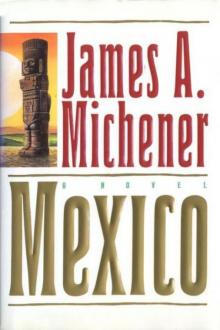 Mexico
Mexico The World Is My Home: A Memoir
The World Is My Home: A Memoir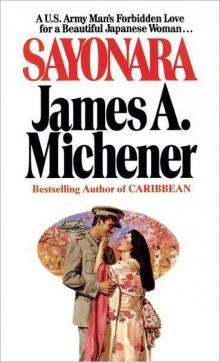 Sayonara
Sayonara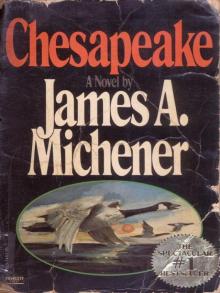 Chesapeake
Chesapeake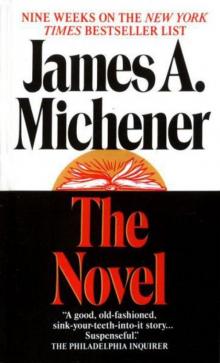 The Novel
The Novel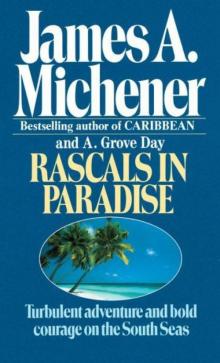 Rascals in Paradise
Rascals in Paradise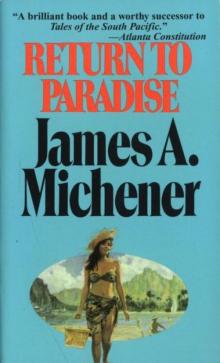 Return to Paradise
Return to Paradise Presidential Lottery: The Reckless Gamble in Our Electoral System
Presidential Lottery: The Reckless Gamble in Our Electoral System The Source
The Source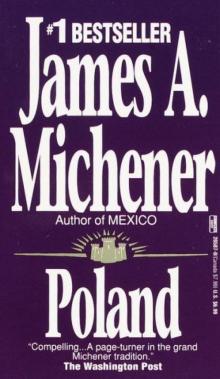 Poland
Poland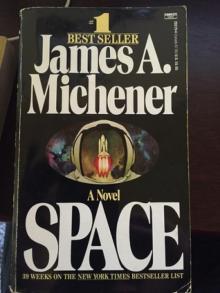 Space
Space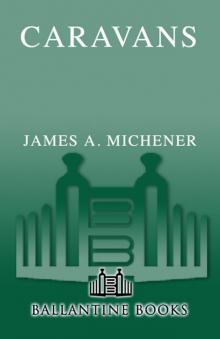 Caravans
Caravans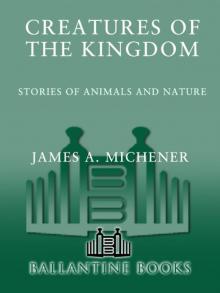 Creatures of the Kingdom: Stories of Animals and Nature
Creatures of the Kingdom: Stories of Animals and Nature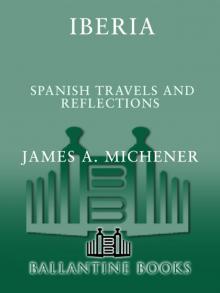 Iberia
Iberia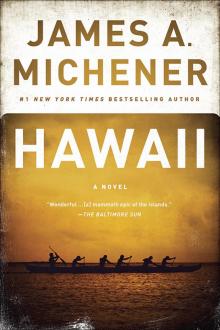 Hawaii
Hawaii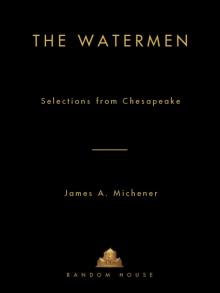 The Watermen: Selections From Chesapeake
The Watermen: Selections From Chesapeake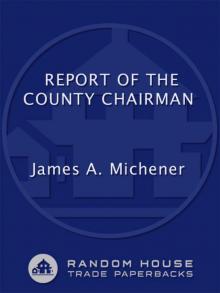 Report of the County Chairman
Report of the County Chairman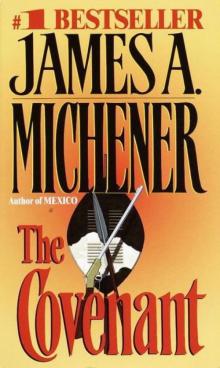 The Covenant
The Covenant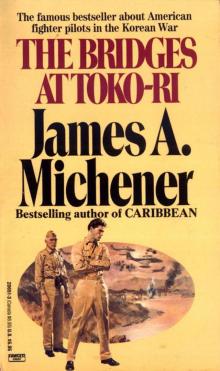 The Bridges at Toko-ri
The Bridges at Toko-ri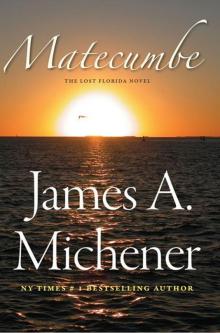 Matecumbe
Matecumbe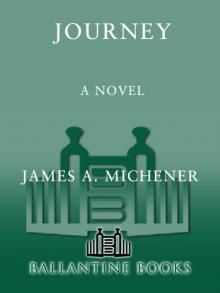 Journey: A Novel
Journey: A Novel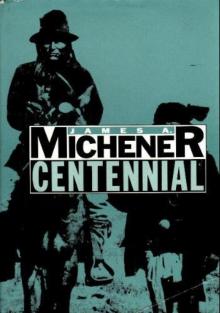 Centennial
Centennial Sports in America
Sports in America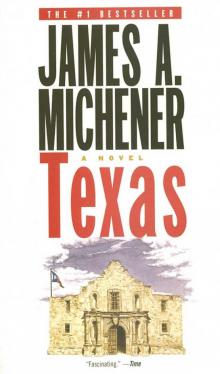 Texas
Texas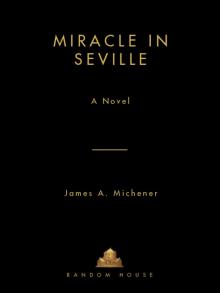 Miracle in Seville
Miracle in Seville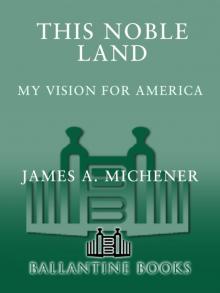 This Noble Land: My Vision for America
This Noble Land: My Vision for America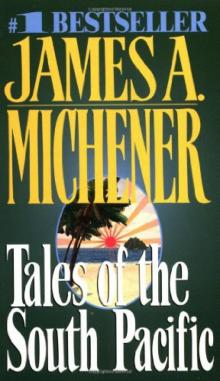 Tales of the South Pacific
Tales of the South Pacific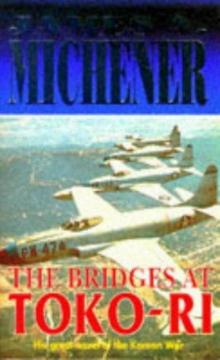 Bridges at Toko-Ri
Bridges at Toko-Ri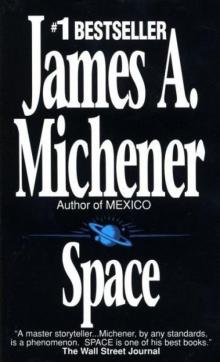 Space: A Novel
Space: A Novel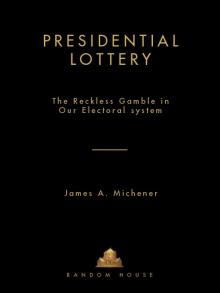 Presidential Lottery
Presidential Lottery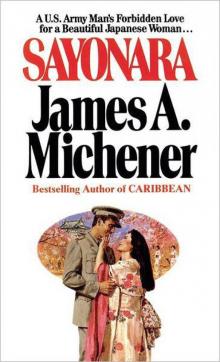 Sayonara: A Novel
Sayonara: A Novel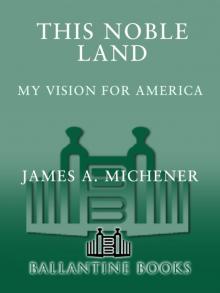 This Noble Land
This Noble Land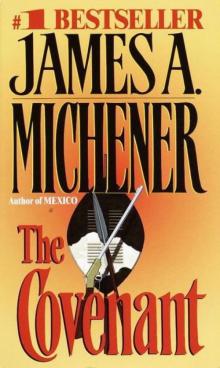 The Covenant: A Novel
The Covenant: A Novel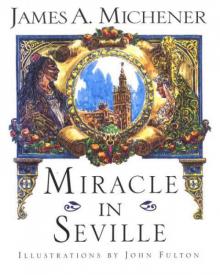 Miracle in Seville: A Novel
Miracle in Seville: A Novel The Bridge at Andau
The Bridge at Andau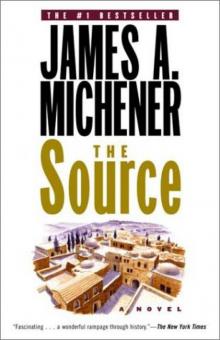 Source
Source The Source: A Novel
The Source: A Novel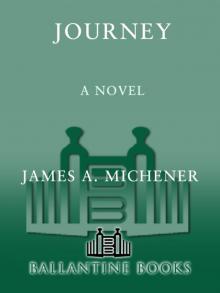 Journey
Journey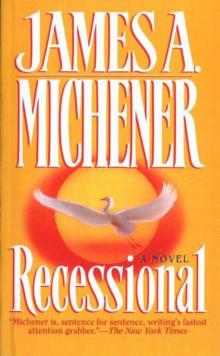 Recessional: A Novel
Recessional: A Novel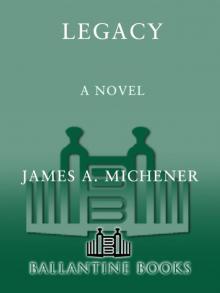 Legacy: A Novel
Legacy: A Novel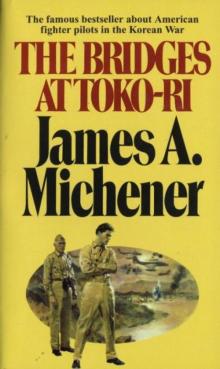 The Bridges at Toko-Ri: A Novel
The Bridges at Toko-Ri: A Novel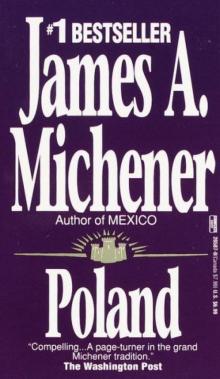 Poland: A Novel
Poland: A Novel